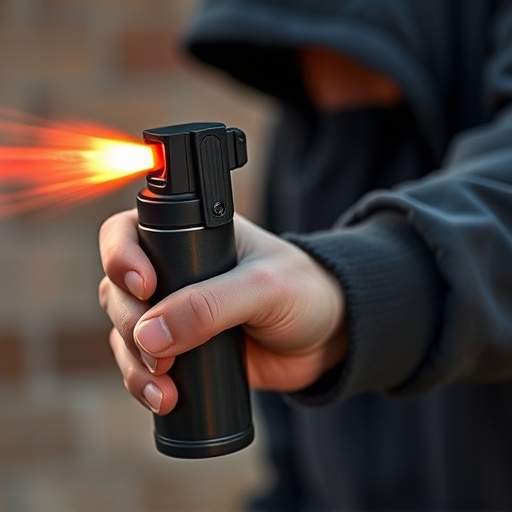Tactical pepper spray, a powerful civilian self-defense tool, requires specific deployment methods for optimal effectiveness. For close-range self-defense, targeting eyes and face ensures swift incapacitation. In crowd control, long-range sweeping motions disrupt individuals safely. Understanding legal considerations, safety precautions, and diverse deployment techniques is crucial for responsible and effective use of tactical pepper spray in various situations.
In today’s uncertain world, civilians are seeking effective personal protection tools. One such option gaining popularity is tactical pepper spray. This article delves into the intricacies of this powerful self-defense mechanism. We’ll explore the science behind its composition, understand optimal deployment methods, and navigate legal considerations to ensure safe civilian use. By examining tactical pepper spray deployment methods, individuals can gain confidence in a crucial tool for personal safety.
- Understanding Tactical Pepper Spray: Its Composition and Effectiveness
- Deployment Methods: When and How to Use Pepper Spray for Civil Protection
- Legal Considerations and Safety Precautions for Civilian Pepper Spray Use
Understanding Tactical Pepper Spray: Its Composition and Effectiveness
Tactical pepper spray is a non-lethal self-defense tool designed for civilian protection, offering an effective deterrent against potential threats. Its composition typically includes capsaicin, the active ingredient found in chili peppers, which causes temporary but intense irritation to the eyes, skin, and respiratory system. This irritant effect disrupts an attacker’s balance and visibility, providing the user with crucial time to escape or seek help. The spray is delivered through various deployment methods, such as hand-held canisters or mounted devices on vehicles and equipment, ensuring accessibility in different scenarios.
The effectiveness of tactical pepper spray lies in its ability to immobilize an assailant without causing permanent harm. When deployed correctly, the spray creates a temporary ‘blind spot’ for the target, allowing users to safely retreat or call for assistance. However, it’s essential to understand that factors like wind direction, distance, and proper application technique significantly impact the spray’s performance, making training and familiarization with deployment methods crucial for optimal effectiveness.
Deployment Methods: When and How to Use Pepper Spray for Civil Protection
When it comes to civilian protection, tactical pepper spray offers a non-lethal yet highly effective deterrent against potential threats. The key to its success lies in proper deployment methods. For self-defense scenarios, individuals should aim for the eyes and face, as these areas are particularly sensitive and can quickly incapacitate an attacker. A quick spray burst at close range is most effective, allowing users to create distance from the hazard.
For communal or crowd control situations, a different approach is required. Tactical pepper spray can be deployed in a sweeping motion across the affected area, using long-range techniques to disrupt and disperse individuals without causing severe harm. This method is especially useful for law enforcement dealing with riots or large gatherings where de-escalation is crucial. Understanding these deployment methods ensures that civilian protection through tactical pepper spray is both safe and effective in various scenarios.
Legal Considerations and Safety Precautions for Civilian Pepper Spray Use
When considering tactical pepper spray deployment methods for civilian protection, it’s crucial to navigate a landscape of legal considerations and safety precautions. Each jurisdiction has its own laws governing the possession, use, and distribution of pepper spray, so understanding local regulations is paramount. Civil liberties and public safety are delicate balances; therefore, citizens should familiarize themselves with their rights and responsibilities regarding self-defense tools like pepper spray.
Safety precautions are equally vital. Pepper spray can cause severe irritation and even blindness if used improperly. Training in safe deployment methods and handling is essential to ensure responsible use. Proper storage and maintenance of the spray device are also critical to prevent accidental activation or misuse. By adhering to legal guidelines and practicing safety precautions, civilians can effectively utilize tactical pepper spray as a valid self-defense mechanism while minimizing potential risks.
Tactical pepper spray, with its proven effectiveness as a non-lethal self-defense tool, offers civilians powerful options for personal protection. Understanding the composition and deployment methods discussed in this article is crucial for responsible use. By following legal guidelines and safety precautions, individuals can effectively utilize pepper spray to deter threats and maintain their safety during various civilian situations. The strategic deployment of tactical pepper spray remains a valuable skill in today’s diverse and dynamic world.
